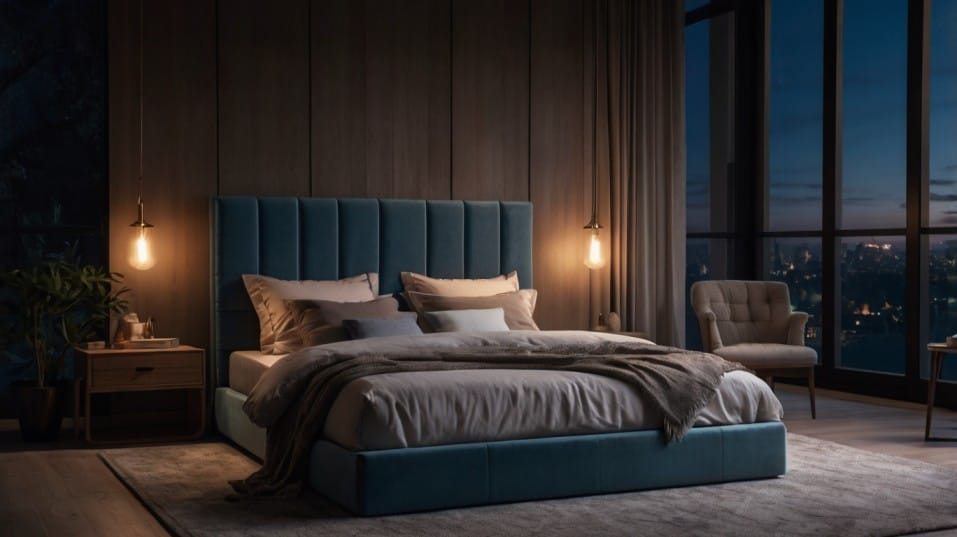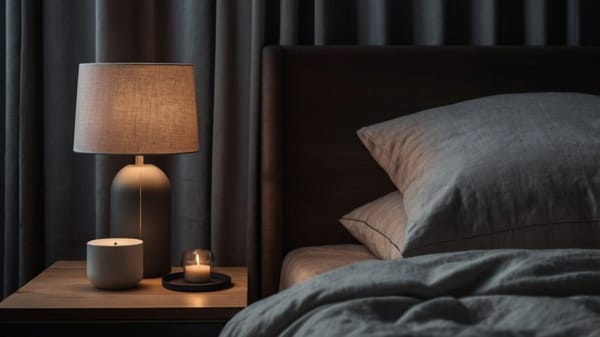What Kind of Mattress Is Best for Deep Sleep?
Struggling with restless nights? Discover how the right mattress can unlock deep sleep, boost energy, and transform how you feel each morning.

What if your mattress is the real reason you wake up groggy, achy, or just... off? Deep sleep isn’t about hacks or habits—it starts with what you’re lying on.
The right mattress helps your body hit those vital sleep stages where real recovery happens.
If you're serious about waking up sharper, stronger, and actually rested, it’s time to rethink your foundation. Let’s dive into how your mattress could be the key to deeper sleep—night after night.
Why Deep Sleep Is the Target
Most people think all sleep is created equal. It’s not. Deep sleep (also called slow-wave sleep) is the most restorative part of your sleep cycle.
It’s when your brain clears out waste, your muscles repair, and your immune system resets. You spend less time in deep sleep as you age, which makes it even more valuable—and harder to come by.
To access deep sleep, your body needs to stay calm, cool, and supported for long, uninterrupted stretches.
Any friction—whether it’s pressure points, temperature spikes, or subtle shifts in alignment—can cut your sleep short or pull you out of the deeper stages. That’s why mattress quality plays a much bigger role than most people realize.

Support: The Non-Negotiable Foundation
Support isn’t just about firmness. It’s about structure. A supportive mattress holds your body in neutral alignment—your spine straight, your shoulders and hips level, your joints relaxed.
This lets your muscles fully release, which is key for entering deep sleep without your body constantly correcting itself.
Memory foam is a popular choice for this reason. High-density foams (4–5 lb/ft³) mold to your body without sagging, offering pinpoint support without pressure. But they’re not your only option.
Latex—natural or synthetic—offers similar contouring with a bit more bounce and breathability.
Hybrid mattresses, which layer foam or latex on top of pocketed coils, can provide a mix of lift and softness that works especially well for combination sleepers or heavier bodies.
If you wake up stiff, achy, or twisted, your current mattress probably isn’t supporting you the way it should. The right one will feel like it’s holding you up—not letting you sink in or slide out of position.
Firmness Is Personal, but Alignment Isn’t
Ignore blanket claims about “the perfect firmness level.” There is no one-size-fits-all answer. What matters most is that your mattress keeps your spine neutral based on your sleep position and body type.
Side sleepers
You’ll want a slightly softer surface to cushion shoulders and hips, but with enough support underneath to avoid sagging.
Back sleepers
Look for medium-firm options that support the natural curve of the lower back.
Stomach sleepers
Go firmer. This keeps your hips from sinking and prevents your lower back from bowing out of alignment.
If you tend to shift between positions, hybrids or responsive foams give you the flexibility to move freely without losing support.
Cooling Tech: A Deep Sleep Accelerator
Your body temperature needs to drop in order to reach deep sleep. If your mattress traps heat, you’ll stay restless—no matter how tired you are.
Foam is notorious for retaining warmth, but not all foam is equal. Look for open-cell structures, gel-infused layers, or copper/graphite infusions that actively dissipate heat.
Better yet, go for natural latex or hybrid models with breathable coil systems that allow for more airflow.
If you sleep hot or live in a warm climate, this isn’t a luxury—it’s a must-have. Even a few degrees too warm can cause your body to cycle back into lighter stages of sleep. That means less recovery, less energy, and more groggy mornings.
Also, don’t ignore your bedding. Lightweight, moisture-wicking sheets (like bamboo or performance cotton) and a breathable mattress protector can amplify your mattress’s cooling features instead of smothering them.
Motion Isolation: Stay Asleep, Even When Life Moves
Movement during sleep is normal—but that doesn’t mean it should wake you up. If you share a bed with a partner, a pet, or even your own restless legs, motion transfer can keep you from reaching and staying in deep sleep.
Memory foam excels at absorbing motion. Hybrids with individually wrapped coils are a close second, offering movement control without that “stuck” feeling some people get from foam.
If you constantly wake up without knowing why, this could be the silent culprit. A mattress that keeps movement localized helps your body stay in the zone, even when life happens around you.
Durability: Your Sleep Is a Long-Term Investment
Cheap mattresses feel fine for a while, then collapse—literally and figuratively.
Sagging in key areas (usually under the hips or shoulders) ruins alignment and forces your body to compensate all night. That’s a recipe for shallow sleep and morning pain.
Look for materials that hold up over time:
- High-density memory foam
- Natural latex
- Reinforced coil systems in hybrids
- Edge support (if you sleep near the edge or sit on your bed often)
This isn’t just about longevity—it’s about consistency. A mattress that stays structurally sound helps your body stay relaxed and undisturbed, night after night.
Smart Sleep Starts with the Right Foundation
Here’s the truth: Even the best sleep habits won’t get you far if your mattress is working against you.
You can dim the lights, skip the caffeine, and meditate before bed—but if your spine’s out of line or your body’s overheating, deep sleep will stay just out of reach.
A mattress designed for deep sleep supports your entire routine. It boosts recovery if you train hard. It sharpens focus if you need to perform. It makes mornings feel like launchpads instead of recoveries.
And once you dial it in, sleep becomes less of a struggle and more of a tool.
Final Thoughts: Make Deep Sleep Your Default
Deep sleep isn’t something you hope for—it’s something you set yourself up to earn. And your mattress is step one. The right one supports your body, keeps you cool, absorbs motion, and stays consistent over time.
That translates to real-world upgrades: more energy, better focus, faster recovery, and clearer mornings.
So don’t wait. Take a hard look at what you’re sleeping on and ask yourself if it’s getting the job done. If it’s not, change it. Your future self—with more energy, better sleep, and fewer aches—will thank you.
Start strong. Sleep deeper. Upgrade your foundation tonight.




